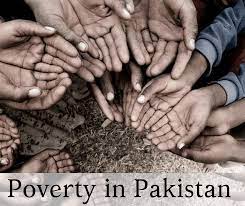Noor Fatima Magsi
In 2015, more than 193 countries adopted the 2030 Agenda for Sustainable Development at the United Nations General Assembly. Countries are constantly striving to strengthen vulnerable communities through capacity building and resource allocation efforts. However, a significant proportion of the world’s population lives below the poverty line. A related question remains. Why is poverty still an unsolved problem? Recognizing the growing link between poverty and the environment, the United Nations has declared Building Forward Together as the theme for this year’s International Day for the Eradication of Poverty.Ending persistent poverty and respecting all people and the planet is critical in the context of current global challenges. Grassroots action is needed to tackle social and environmental injustice, and one effective way to ensure that such action is achieved is through public-private partnerships. Private organizations and NGOs can work with governments to meet the needs of different communities. One example of a successful partnership is the Pakistan Poverty Alleviation Fund. PPAF is the primary agency implementing two major initiatives under the National Poverty Graduation Initiative (NPGI) of his Ehsaas program of the Government of Pakistan. These include the Ehsaas Interest Free Loan (IFL) Program and the National Poverty Graduation Program (NPGP) funded by the Government of Pakistan and the International Fund for Agricultural Development (IFAD). This program contributes to the Ehsaas Amdan program. These initiatives are helping millions of people break the cycle of poverty. Under the NPGP, it is a major initiative of the Pakistan Poverty Alleviation Fund (PPAF), which contributes to the Ehsaas-Amdan Programme, and is supported by the International Fund for Agricultural Development (IFAD) and the Government of Pakistan. To date, the program has distributed over 72,160 assets to the poorest, including small business items such as livestock, food, mobile repair, spare parts and clothing stores, in addition to capacity building training for beneficiaries. did. This program has proven to be a beacon of hope for many underprivileged families. Similarly, to date, 1,556,808 interest-free loans have been provided to poor households, enabling them to start small businesses and earn a sustainable livelihood. The organization has worked in several other areas such as health, education, and tourism and power generation by partnering with many international and domestic donors. Through the Agency for Development Cooperation (AICS), they work with the Italian government to earn a living, launch small-scale infrastructure programs, and provide skills-based training to young people in Balochistan, Khyber Pakhtunkhwa, and former FATA districts. increase. The Livelihood Support and Promotion of Small Communities Infrastructure (LACIP) program was started by the PPAF in 2012, with financial support from the Federal Republic of Germany through KfW. In his eight selected districts of Khyber Pakhtunkhwa, it aims to improve general living conditions, reduce vulnerability to disasters and increase income opportunities for the poor. Such interventions impact at the mass level and drive change from the bottom up. From helping the poor during the pandemic, up skilling the poor, and building capacity across vulnerable communities, PPAF’s efforts have brought about positive change as a model for poverty reduction.
Trending
- Cleaners are the most important people of our society: Rai Muhammad Akbar
- Javed Badhanvi presides over an important meeting regarding the resettlement of 1989 refugees
- Illegal encroachments will not be tolerated under any circumstances: CEO Syed Ali Irfan Razvi
- Annual Siraj Al-Manira Conference holds at Masjid Hayat-ul-Nabi, Oldham, 2024.
- EKKE Rahman left Manchester on April 21, to reach Nepal, and after he will leave for Pakistan
- LIIBS 7th Edition, Unites Stakeholders for Collaborating for Growth
- Gwadar under water
- Broken Wings by Kahlil Gibran

